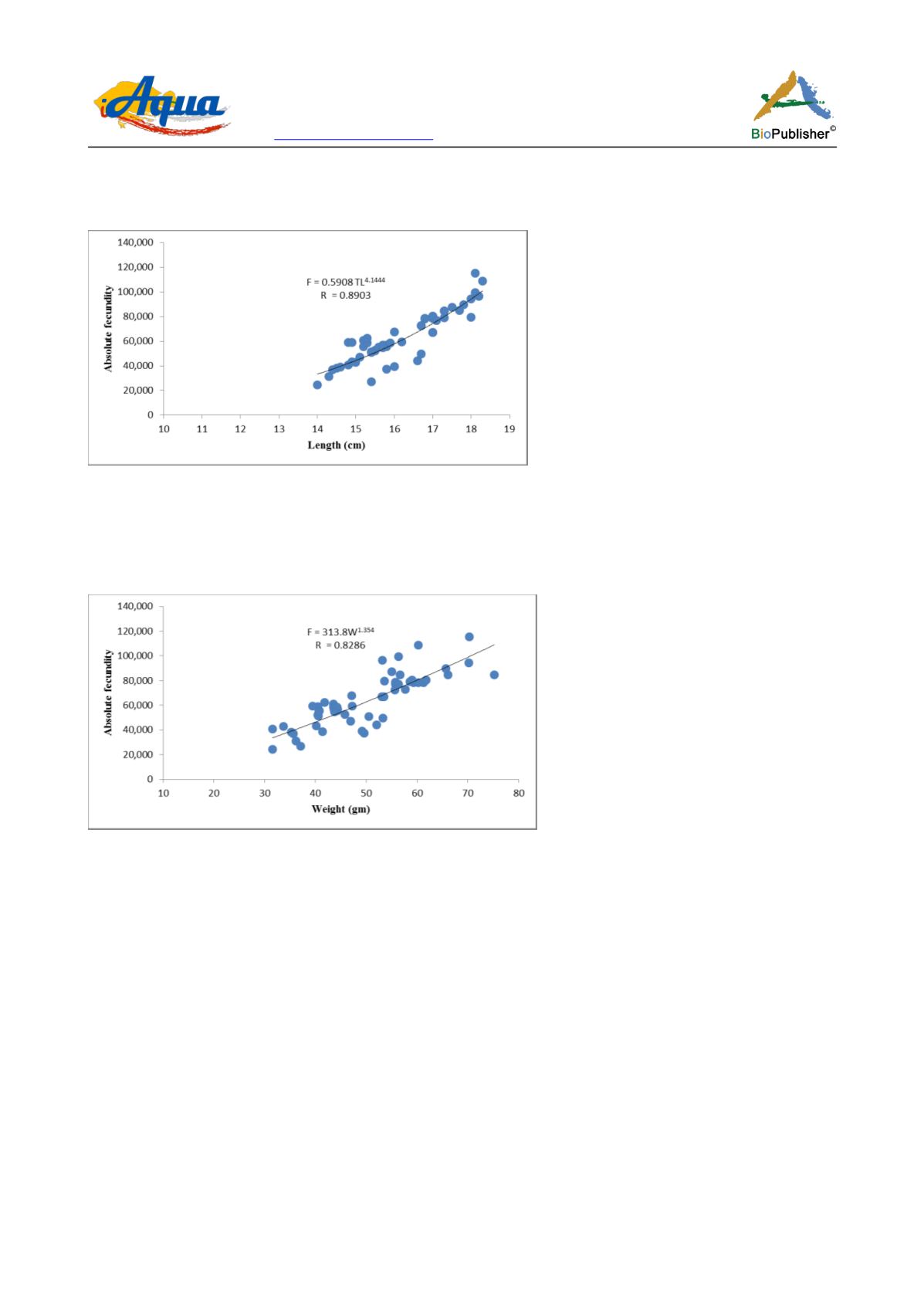
International Journal of Aquaculture, 2016, Vol.6, No.5, 1
-
14
11
F = 0.5908TL
4.1444
R = 0.9034
Where, F = fecundity, TL = total length of individual fish (cm).
Figure 12 Absolute fecundity – length relationship of female
L. carinata
in Suez Bay
The relationship of fecundity with body weight was expressed by the equation;
F = 313.8 W
1.354
R = 0.8286
Where F = fecundity, W = total body weight (Figure 13), the correlation too was significant.
Figure 13 Absolute fecundity– weight relationship of female
L. Carinata
in Suez Bay
The mean absolute fecundity of
L. carinata
in Suez bay was 63.896 oocytes per fish which was slightly higher
than that recorded by (Mahmoud, 1997) which was 58 400 oocytes, and much lower than that recorded by (Abou -
Seedo and Stephen, 2004) which was 127 350 oocytes for the same species , this may be related to environmental
factors as indicated by (Wroblewski et al. 1999).The data showed that the fecundity varies considerably between
individuals irrespective of their length and weight, so there were a difference in absolute fecundity for the same
length group, This variation in fecundity may be due to different adaptations to environmental habitats (Witthames
et al., 1995 and Assem et al., 2015). Fecundity (F) in all the relations, the coefficient of correlation (r) was
significant at 0.01. The absolute fecundity of
L. carinata
in Suez bay as other fishes increases with increase of
length and weight (Table 4), but with different correlated values, the lowest (r) were with weight (0.82) while the
highest were with length (0.89) which represented strong relationship between F and length more than F with
weight (Figure 13) similar result was obtained by (Assem, 2008 and El- Ganainy et al., 2014). On the contrary the
F with weight in
L. abu
shows more relationship than F with length (Şahinӧz, 2011). In general the absolute
fecundity has a linear relationship with length and weight and increases proportionally with them the same
conclusion reached by (EL - Boray, 1993; Rheman, 2002; Albieri and Araújo, 2010 and El - Ganainy et al., 2014).


